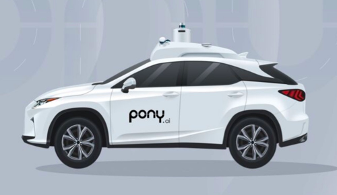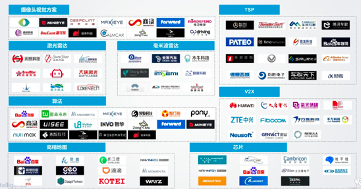Introduction
As major self-driving companies continue to burn cash and raise funds, the self-driving industry has become a fiercely competitive field for both established and startup companies. Established companies hope to seize the next industry trend, expand their business scope, and establish a leading position, while startups leverage their advantages in streamlined operations and personnel to become the next rising star in the industry. As companies that enter the self-driving industry present demo-level road tests, the day when level 5 self-driving becomes a reality seems to be getting closer. So, amidst intense competition, who will ultimately come out on top? This article aims to analyze the current situation and future prospects of the leading companies in the self-driving industry.
Categorizing Self-Driving Manufacturers
Self-driving manufacturers can be categorized into several types, including:
-
Automobile manufacturers, such as Mercedes-Benz, BMW, Volvo, Tesla; and in China, BYD, SAIC, XPeng, and NIO. Traditional automobile manufacturers began researching self-driving technology very early, even when computer technology was very primitive in the last century. However, with the rise of various new car-making forces in recent years, the upheaval of the entire industry has negated the previous time advantage.
-
Internet companies, such as Waymo in the US, and Baidu in China, as well as startups like Pony.ai and WeRide. These companies place algorithm at the core and expect to tap into the low-cost self-driving market.
-
Hardware and software solution companies, such as Bosch and Nvidia, which combine hardware and software. In China, Huawei and DJI are also part of this category, as they sell solutions to automobile manufacturers.
-
Companies that have a demand for self-driving, mainly including companies that provide ride-hailing services, such as Uber and Didi. These companies are also actively collecting data and conducting research and development. If self-driving becomes a reality, they will be the first to benefit, and will have an absolute advantage in obtaining market share.
How will each company stand out from the crowd?
Automobile Manufacturers
First, there are traditional car manufacturers represented by General Motors and BBA, who often focus on assisted driving and do not have much advantage in true level 5 autonomous driving. This is partly because they struggle to attract high-caliber computer talent in the current market due to their inability to offer satisfactory salaries; and partly because their brand reputation is at stake with immature fully autonomous driving technology, which could result in devastating damage in the event of a safety accident. This inevitably hinders their innovation efforts. On the other hand, new players in the auto industry, such as Tesla, do not face these burdens. As renewable energy gradually becomes the future trend, they are more and more favored by young people, surpassing traditional car manufacturers. For autonomous driving, these companies offer attractive salaries, cutting-edge technology, a corporate culture similar to internet companies, making them attractive to young graduates. In such an environment, talented individuals have a greater chance of achieving success. These new players in the auto industry may bring us more surprises.
Internet Companies
To be honest, I personally believe that internet companies have the highest chance of achieving the level 5 goal. These companies often have innovative thinking, cutting-edge algorithm support, a large number of talents and with time, increasingly more data, all of which are pivotal for the future realization of autonomous driving. Due to their solid software capabilities, they have already been testing comprehensive algorithms and collecting trial data for extreme scenarios long before other companies. However, the only obstacle to their success, in my opinion, lies in the lack of a mature industry chain, making it impossible for them to complete the whole autonomous driving industry chain independently, both upstream and downstream. This could be an opportunity for new players in the auto industry to overtake.

That is also why Lou Tiancheng, CTO of Pony.ai, said in a recent interview that the ultimate battle for autonomous driving is definitely not a competition of algorithm capabilities, but rather a battle of the complete industry chain. Therefore, there have been rumors recently that Pony.ai has decided to start its own car manufacturing business. I believe these rumors are not groundless, because by controlling the industry chain, the company will have the potential for continuous development without being restricted by others.
Software and Hardware Integration CompaniesThis type of enterprise has a lower possibility of achieving the entire autonomous driving industry chain, and is more likely to act as a hardware supplier and solution provider to help automakers produce cars. This is just like what Ren Zhengfei has repeatedly emphasized within Huawei, that Huawei will never make cars but will help enterprises make good cars. I think this development path is undoubtedly correct. Companies like these hardware and software providers do not have several decades of accumulation in the automotive industry and cannot keep up with the trend of the emerging new forces of car-making. However, by utilizing their own advantages and deeply exploring their hardware manufacturing capabilities, they can provide various solutions for autonomous driving, which undoubtedly makes full use of their own advantages. If autonomous driving really becomes possible in the future, these companies will not be left behind. They can even use this opportunity to form hardware industry standards and obtain maximum benefits.
Therefore, although the chance for these companies to achieve true autonomous driving is low, they are an absolute force that cannot be ignored when autonomous driving becomes possible.
Ride-hailing companies represented by Didi
This type of company may be the most hopeful enterprise for autonomous driving to become possible. Taking advantage of the momentum generated by full autonomous driving, they can directly land on the taxi industry where they have already been working for many years. They undoubtedly occupy an absolute initiative in the taxi industry, whether it is in terms of brand influence, market share, or industry experience. At the same time, they are also the most pressured enterprises. If autonomous driving is not achieved by themselves, it is very likely that they will have to completely transfer their years-long work in the ride-hailing industry to others. The probability of a comeback at that time is also very small.
Conclusion
As a practitioner in the autonomous driving industry, I also look forward to the arrival of full L5 level autonomous driving. Looking at various companies presenting their own expertise and the fierce competition in the industry, I cannot help but feel proud and excited to be part of it. From a personal perspective, I think that the key to determining the future of autonomous driving must be data and a well-established supply chain. Data is the most important condition for artificial intelligence. Whoever possesses a large amount of data and various extreme-scenario data can make their autonomous driving safer. The supply chain is the foundation for the entire industry to succeed. Those who want to complete the mission of full autonomous driving must have their own complete supply chain system. Otherwise, they will be limited by people’s abilities under the current environment, which means their fate is in the hands of others. With the white-hot competition in autonomous driving, the show has just begun…
This article is a translation by ChatGPT of a Chinese report from 42HOW. If you have any questions about it, please email bd@42how.com.
